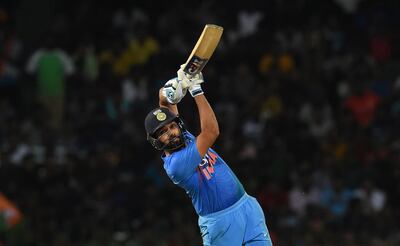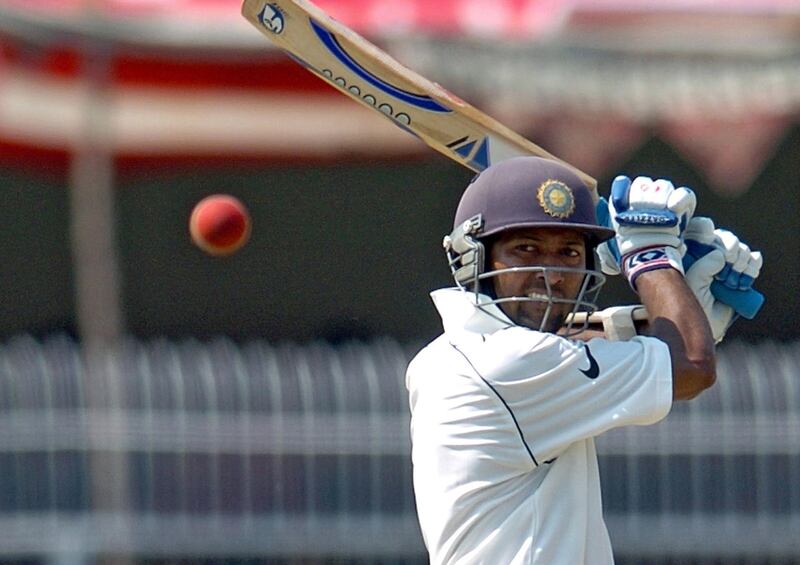Last week we saw two cricket encounters involving India’s past and future being played out in different formats and in settings that could not have been further apart from each other.
During the Nidahas Trophy in Sri Lanka, a second-string Indian team – largely made up of up-and-coming talents – were seen in Twenty20 action under the lights, with players wearing the trademark blue jersey, looking sharp in the field, and understandably eager to impress.
Then there was the Irani Cup, the annual one-off game played between the reigning unlimited-overs champions of India (in this case, Vidarbha) and a composite side comprising the best of the rest (called Rest of India). As in the previous years, it pitted against each other 22 men wearing whites, and was staged in the comparatively serene environs of the Vidarbha Cricket Association Stadium in Nagpur, albeit under the sun.
That was not all.
The Nidahas Trophy’s most valuable player was 18-year-old India all-rounder Washington Sundar, while the Irani Cup’s man of the match was 40-year-old former India opener Wasim Jaffer.
That's how we end the series on a high! What a night, what a win! #TeamIndia clinch the Nidahas Trophy! pic.twitter.com/mCstu2JdCM
— BCCI (@BCCI) March 18, 2018
Vidarbha celebrate maiden @paytm #IraniCup triumph. pic.twitter.com/mEIjtBZetG
— BCCI Domestic (@BCCIdomestic) March 18, 2018
To the viewers who tuned in to watch both clashes, it must have felt like cricket was being played in two modes – one in fast forward and the other in slow-mo – especially when comparing Jaffer’s patient accumulation of runs with former Mumbai teammate Rohit Sharma’s smashing of the opposition bowling.
This is hardly surprising given that the formats were different. But it also demonstrated how much the game has changed in the country during the past decade since the advent of T20 cricket and the Indian Premier League.
It highlighted, too, the fact that Jaffer remains one of the last vestiges of a time when cricket was genuinely considered a gentleman’s game. He is one of a dying breed of players whose batting is predicated on conventional technique, textbook shots, strong defence and the ability to play for long hours with unwavering concentration and stamina. It is perfectly imaginable he will have been told by his childhood coach never ever to hit the ball over the cover fielders.
_______________
Read more
Nidahas Trophy takeaways: Rohit Sharma's India prove their bench strength
[ Holding sports stars to a higher moral standard just asking to be deceived ]
Stats point to India and England as favourites for 2019 Cricket World Cup
[ Dravid potential coach for Kohli-led Indian cricket team? Think twice ]
_______________

Jaffer played just 31 Tests for India since making his debut against South Africa in 2000 – back when playing the long game was still considered a thing. But gradually his relevance began to fade at the international level owing to his inability to change tack depending on the situation, especially in the less familiar conditions abroad.
This lack of flexibility eventually cost him his place in the side at a time when Virender Sehwag, his contemporary, was on the rise. And once Gautam Gambhir established himself at the top of the order along with Sehwag, Jaffer’s name was lost to history. His last Test also came against South Africa, in April 2008.
Another factor that may have gone against Jaffer was his fielding. He was not the best at it. He was fine at slips, but the same lazy elegance that defined his batting and made it look easy on the eye, was less appreciated while on the field.
Unfortunately for him, it was a time when scoring runs for your team was not enough to keep your place in the side but stopping opposition runs as well. Even Sehwag, who single-handedly won games for his country, had to learn to dive and, basically, show more urgency on the field.
That Jaffer did not make a bigger impact for India is a shame. After all, a player who has scored 18,110 runs at an average of 50.44 in 242 first-class matches, including 53 hundreds and 86 fifties, is clearly no mug with the bat.
Wasim Jaffer becomes the highest scorer ever in #IraniCup #ROIvVID pic.twitter.com/RPP9Dcmequ
— BCCI Domestic (@BCCIdomestic) March 15, 2018
Wasim bhai, an epitome of batsmanship, PERIOD! @paytm #IraniCup #SheerClass @BCCIdomestic #WasimJaffer
— Murali Vijay (@mvj888) March 16, 2018
The fact that after playing for 22 years, he scored a match-winning 286 – the highest individual score in the Irani Cup’s 59-year history – last week against an attack that included India's premier off-spinner Ravichandran Ashwin is a testament to his durability and love for the game. Indeed, his knock will have provided lessons to Rest of India's Prithvi Shaw, the Indian Under 19 captain.
Yet, one could argue that in today's fast-moving world Jaffer's batting qualities may not be considered paramount in order to have a successful career - especially at a time when Test cricket itself it going through an existential crisis.
In which case, does he consider himself a cricketing tragic? The short answer is unlikely. He says he has no regrets, and his demeanour and attitude on and off the field speak to that. Such is Jaffer's nature - strong, secure, at peace with himself and optimistic - that he is usually always looking ahead, striving to get better and, crucially, spending a lot of his time helping other players to do the same.
He is reported to have reciprocated Vidarbha's gesture of honouring his contract despite being injured and out of the side by playing for free for them this season.
That, his sharp thinking and his fidelity to the basics of the game are all reasons why he has been able to help coach Chandrakant Pandit to turn the young Vidarbha side into domestic champions.
And while all this suggests Jaffer could make a good coach one day, it also provides insight into the man that he is. His brand of cricket might be old-fashioned, perhaps even anachronistic, but the person himself is worth emulating.






